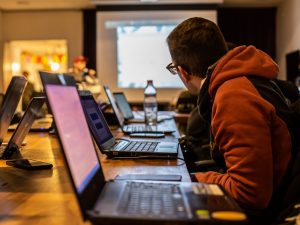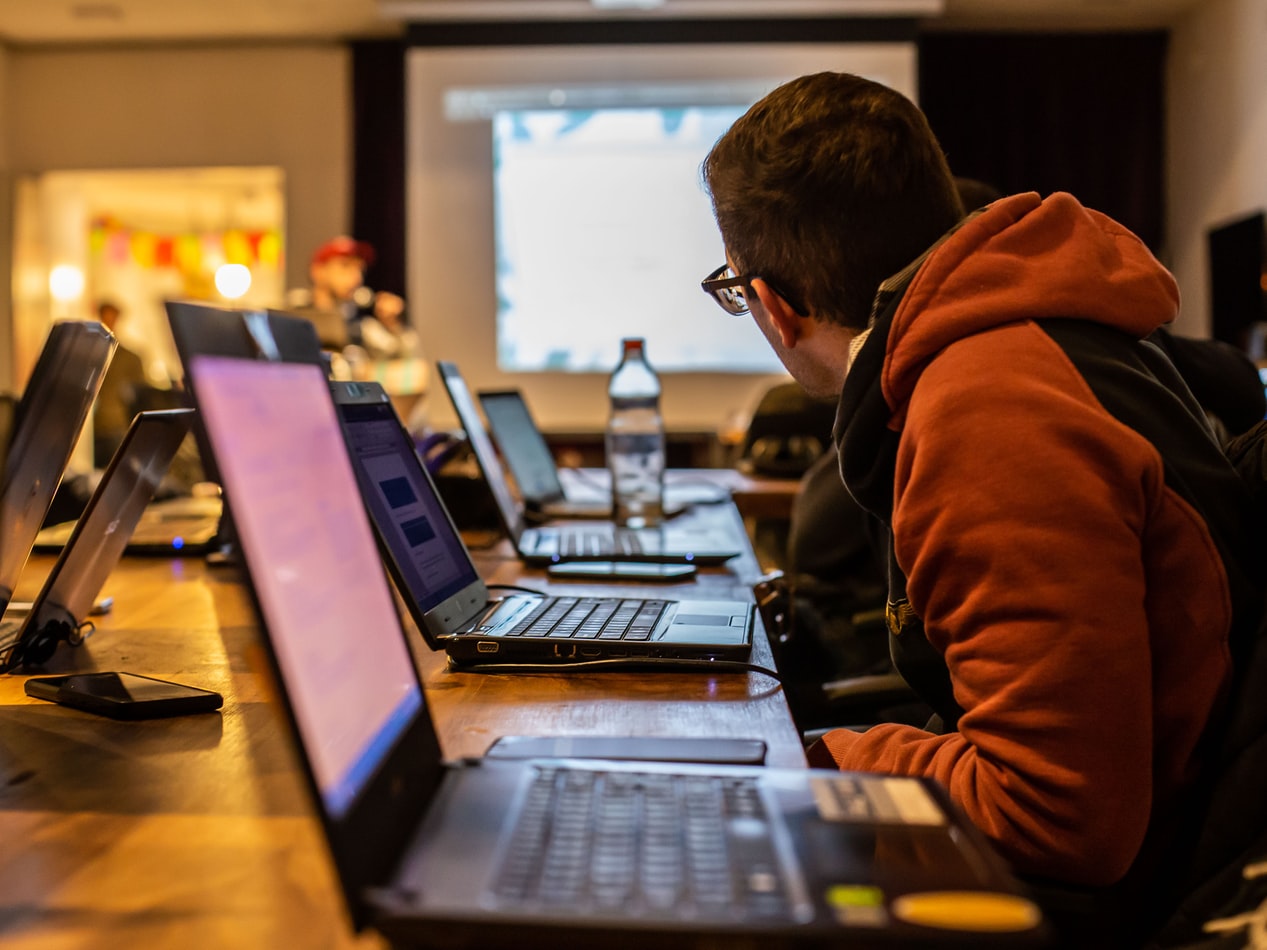
https://unsplash.com/photos/nOwkd4YvdUg
Brief description:
This activity is to develop fundamental digital literacy skills: critical thinking, decision making and creative thinking, communication skills in digital and media environments. Students participate in this activity as a media company. Their tasks are to select two real news from three news and post them on the website blog. It teaches students how to use web tools and create healthy web content for the community and evaluate the content critically. Importantly, it informs students that everyone could be a content contributor on the web, so they need to understand how to deal with the information explosion wisely.
Tools:
A free website or blog with accounts (ask students to register the accounts before this activity), News Information Inventory, four logos for media companies. Computers or laptops and access to the internet. Cloud storage server(Dropbox or Google Drive)
Steps:
1. News information Inventory: Prepare twelve new or information from the internet or social media. The news consists of four fake news or information and eight real news or information. Twelve news messages are categorized into four packages, and each of them has one fake news and two real news.
2. Give an example of fake news and information from the internet and social media.
3. By studying and analyze the case, help students develop critical thinking skills to analyze and evaluate web content. (Introducing Caulfield’s (2017) e-book Web Literacy for Student Fact-Checkers, chapter 26: EVALUATING NEWS SOURCES )
4. Divide the class into four groups of 3 – 5 students. Every group represents a start-up media company. They need to post a news blog on their websites for their followers. Distribute one of the four packages to each group. Then they need to select two real news information to post from the package(3 news messages in total).
5. Prepare a free website for students to use (WiXi or WordPress Blog or GitHub Pages). Give brief demonstration on how to log in to the websites and create a web page or blog, add images, edit text and change fonts. Show students how to comments on the post or blog on the website.
6. Students start to create their new blog. After they finish the blog posts, students will share their website links to the Dropbox or Google drive.
7. Students read other company posts and give some comments(mainly indicate this is a piece of fake news or real news). In this section, remind them to be polite and respectable to build a healthy online environment.
8. After all the steps are done. Teachers give the authentication of the news messages and reward the companies posting the real news messages.
Short review:
In this activity, students learn how to use online sources to evaluate online content. Students use digital tools to gather information and create their products online, and they learn to work with others and communicate via online implements. It prepares information literacy, socio-emotional literacy and reproduction literacy for students(Weiss, 2017). Based on Mozilla’s web digital tools(n.d.), it improves students’ read, writes and participates skills as they evaluate online information, composes and design their web blog, and they contribute to web content and share their ideas with others.
References
Caulfield, M. (2017). Web literacy for student fact-checkers.
Dr. Dovi, W. (2019, October 3). The essential elements of digital literacy for the 21st century workforce (Infographic). enabley (formerly Time To Know). https://enabley.io/the-essential-elements-of-digital-literacy-for-the-21st-century-workforce-infographic/
Web literacy. (n.d.). Mozilla Foundation. https://foundation.mozilla.org/en/initiatives/web-literacy/


Chloe Bowra
Hello,
This assignment sounds awesome! I have tried something similar with my students in the past to help them determine real versus fake news. Sometimes, it really is hard to tell! Thanks for sharing.
Chloe
Junxiang
Thanks for your comments, Chloe. It is difficult to identify credible information. Hopefully, with sound knowledge in digital literacy and regular reflection on our discernment, we could filter out most of the fake news.